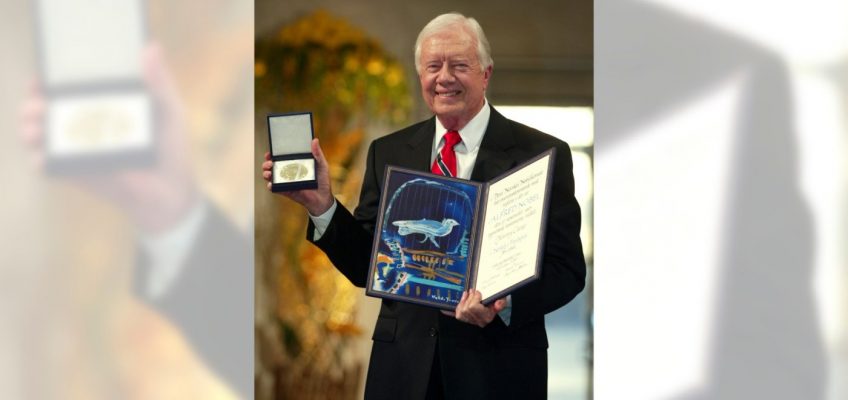Today is Saturday, Oct. 11, the 284th day of 2025. There are 81 days left in the year.
Today in history:
On Oct. 11, 2002, former President Jimmy Carter won the Nobel Peace Prize for his and The Carter Center’s work to resolve international conflicts and advocate for human rights.
Also on this date:
In 1906, the San Francisco Board of Education ordered the city’s Asian students segregated into their own school. (The order was later rescinded at the behest of President Theodore Roosevelt, who in exchange promised to curb future Japanese immigration to the United States.)
Related Articles
AstraZeneca agrees to lower drug prices for Medicaid under Trump administration deal
US citizen detained and held at ICE building in Portland for hours before release, lawyer says
Immigration crackdown stirs unease ahead of this weekend’s Chicago Marathon
Critically endangered baby black rhino makes its debut at Cleveland zoo
Firings of federal workers begin as White House seeks to pressure Democrats in government shutdown
In 1968, Apollo 7, the first crewed flight of the Apollo program, was launched with astronauts Walter Schirra Jr., Donn F. Eisele and R. Walter Cunningham aboard.
In 1984, Challenger astronaut Kathryn D. Sullivan became the first American woman to walk in space as she and fellow Mission Specialist David C. Leestma spent 3 1/2 hours outside the shuttle.
In 1986, President Ronald Reagan and Soviet leader Mikhail S. Gorbachev opened two days of talks in Reykjavik, Iceland, concerning arms control and human rights.
In 1987, the AIDS Memorial Quilt was first displayed during the Second National March on Washington for Lesbian and Gay Rights on the National Mall.
In 1991, Anita Hill accused Supreme Court nominee Clarence Thomas of sexual harassment in testimony before the Senate Judiciary Committee; Thomas denounced the proceedings as a “high-tech lynching” and was confirmed on Oct. 15 by a 52-48 vote.
In 2017, the Boy Scouts of America announced that it would admit girls into the Cub Scouts starting the following year and establish a new program for older girls based on the Boy Scout curriculum.
In 2021, Jon Gruden resigned as coach of the Las Vegas Raiders following reports about messages he wrote years earlier that used offensive terms to refer to Blacks, gays and women; Gruden later filed a lawsuit, still pending, against the NFL and Commissioner Roger Goodell, alleging a “malicious and orchestrated campaign” to destroy his career.
In 2024, the Nobel Peace Prize was awarded to Nihon Hidankyo, a Japanese organization of survivors of the U.S. atomic bombings of Hiroshima and Nagasaki during World War II, for its activism against nuclear weapons.
Today’s Birthdays:
Former U.S. Defense Secretary William Perry is 98.
Actor Amitabh Bachchan is 83.
Singer Daryl Hall (Hall and Oates) is 79.
Sen. Patty Murray, D-Washington, is 75.
Actor David Morse is 72.
Football Hall of Famer Steve Young is 64.
Actor Joan Cusack is 63.
Actor Jane Krakowski is 57.
Rapper MC Lyte is 55.
Actor Emily Deschanel is 49.
Golfer Michelle Wie is 36.
Rapper Cardi B is 33.




